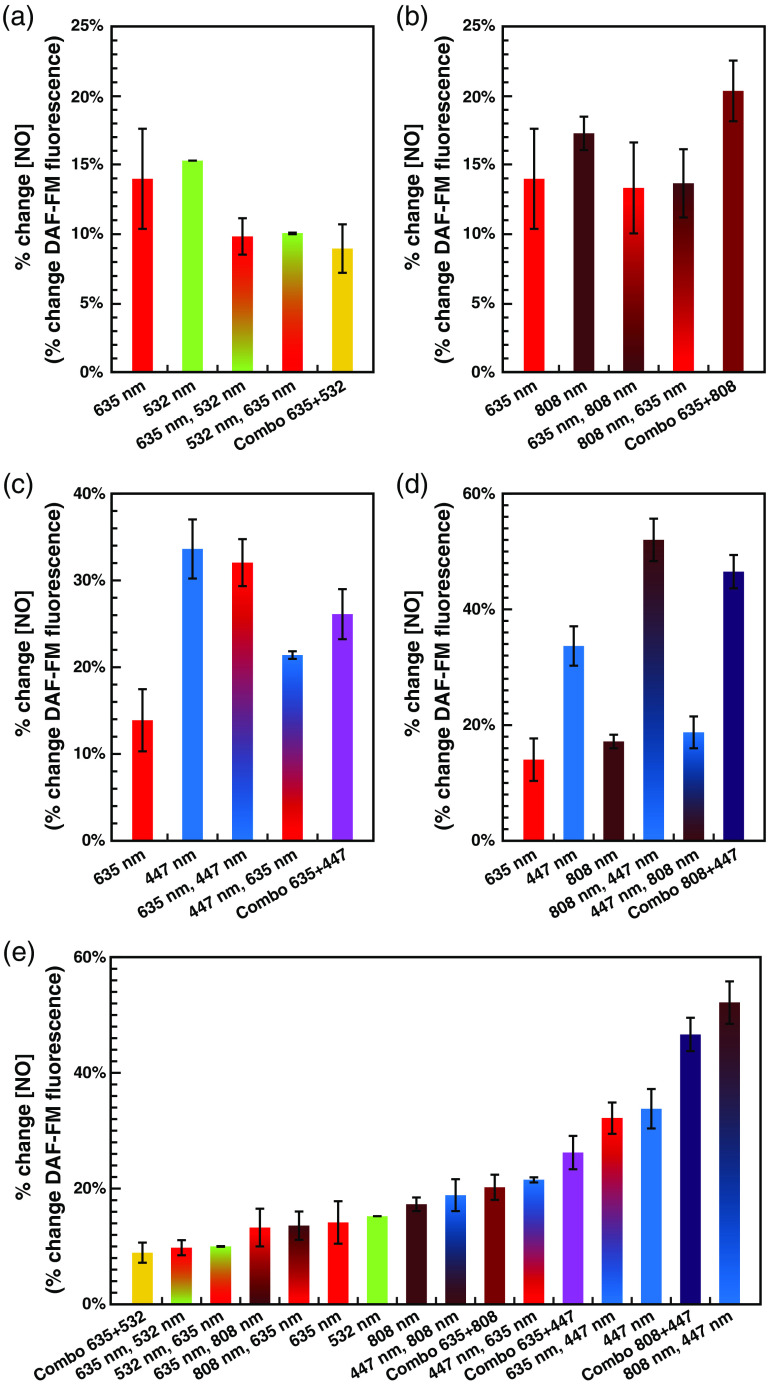Fig. 4.
Different combinations of wavelengths (serial or simultaneous) have synergistic and/or interfering effects on the observed light-dependent increases in NO. Individual exposures were of at for each wavelength; serial exposures (denoted: first wavelength and second wavelength) were ( for 30 min) for one wavelength, followed by ( for 30 min) of the other wavelength (total ); simultaneous exposures (denoted: combo wavelength 1 + wavelength 2) were of each wavelength, both at , simultaneously for 60 min (total ). Immediate postexposure percent changes in NO level ( DAF-FM fluorescence) ± standard error for (a) 635-nm red, 532-nm green, and combinations of the two; (b) 635-nm red, 808-nm near-infrared, and combinations of the two; (c) 635-nm red, 447-nm blue, and combinations of the two; (d) 808-nm NIR, 447-nm blue, and combinations of the two (635-nm red is included as a common point of reference); and (e) all of the above wavelengths, in order of percent change.

